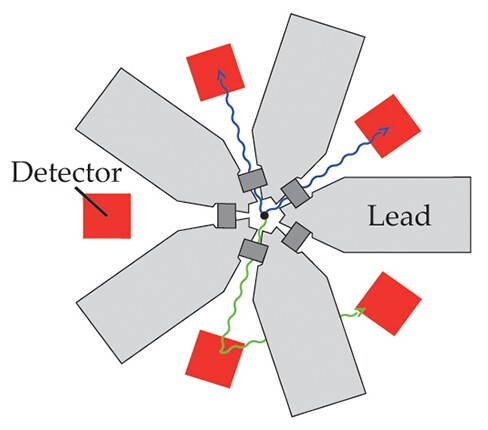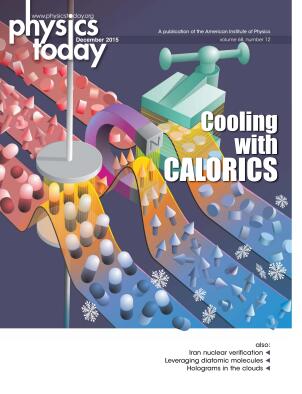A two-in-a-million double-photon nuclear decay
DOI: 10.1063/PT.3.3011
In her 1930 dissertation, Maria Goeppert Mayer used perturbation theory to derive the probability for an atom to change its electronic state by absorbing or emitting two photons of appropriate combined energy. Such two-photon processes are today being routinely used in spectroscopy and other applications. Although atomic nuclei can undergo similar transitions involving two gamma-ray photons, they are usually overwhelmed by single-gamma transitions. Two-gamma decays have been observed only for three isotopes in which quantum mechanics forbids single-gamma decay. Now a team at the Darmstadt University of Technology in Germany reports the first clear observation of two-photon emission from excited nuclei for which the single-photon decay is allowed—and 5 × 105 more likely—a situation the researchers call competitive double-gamma decay. As sketched here, the researchers deployed five detectors (red) to record pairs of gammas (blue) emitted in the two-photon decay of excited barium-137 nuclei. However, a lone gamma (green) from the copious single-photon decays might deposit only part of its energy in a detector; so to prevent it from caroming into a second detector and mimicking a double-gamma decay, the experimenters placed lead shields (gray) between the detectors. Moreover, the detectors’ subnanosecond time resolution captured the additional flight time of the scattered gamma. Careful statistical analysis took account of the other significant background source: two nearly simultaneous yet independent single-gamma decays. The result: distinct two-gamma decay signatures. What is more, the researchers could determine the dominant perturbation-theory contributions, which depend on details of nuclear structure. (C. Walz et al., Nature 526, 406, 2015, doi:10.1038/nature15543

